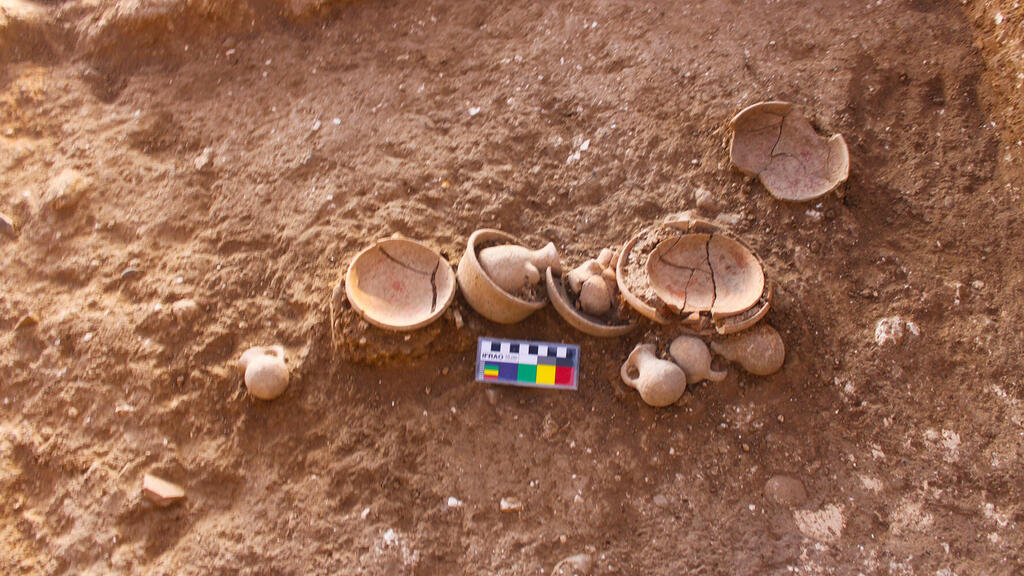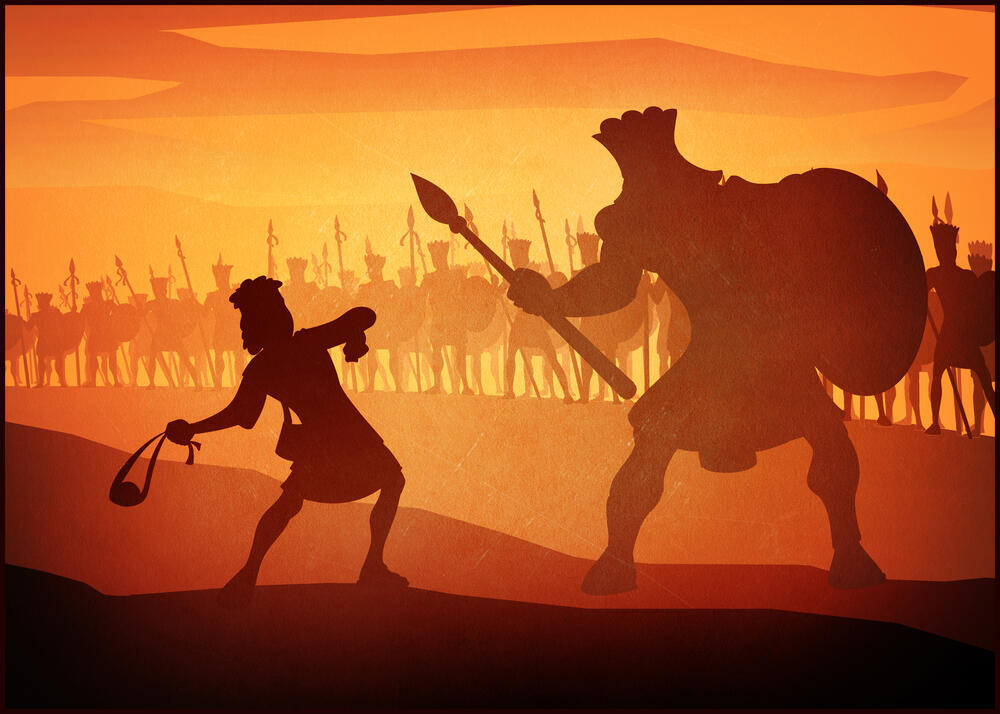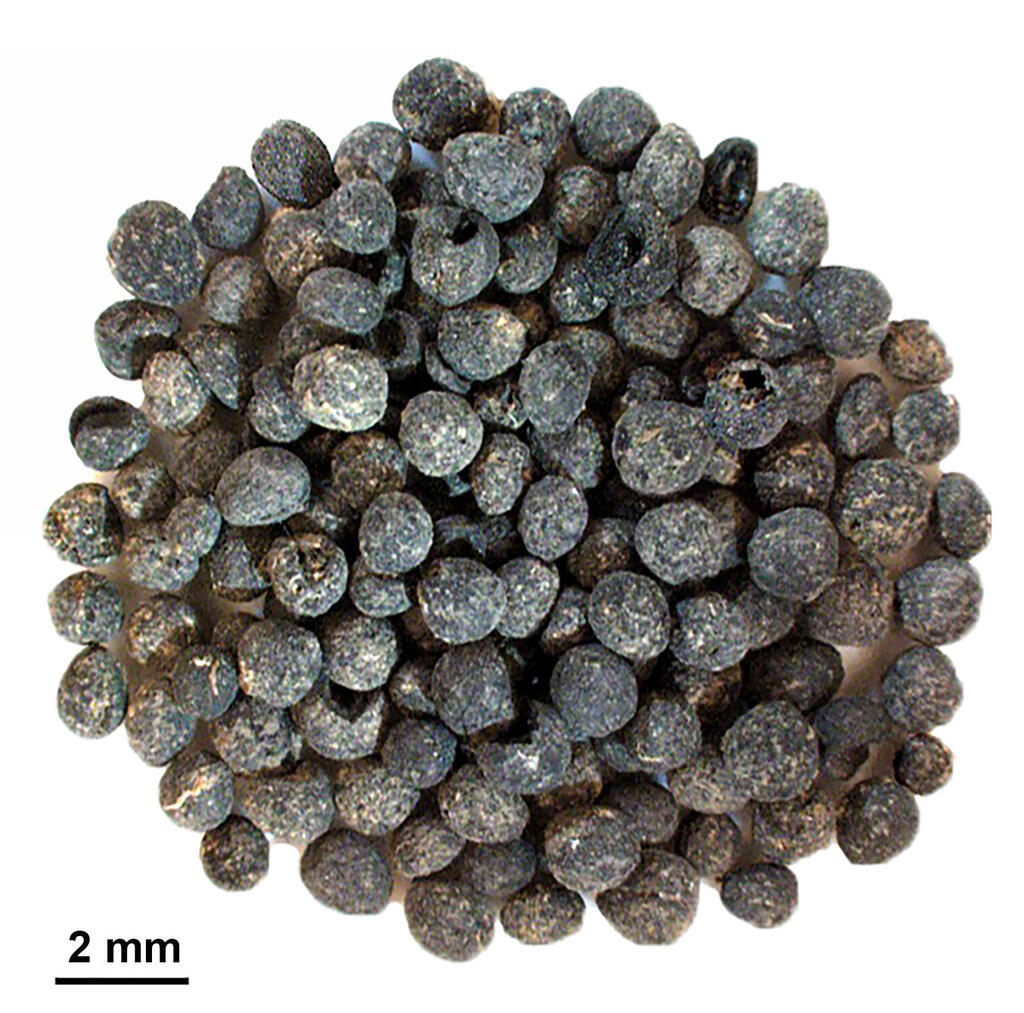Getting your Trinity Audio player ready...
The Philistine people, who flourished during the Iron Age (approximately 1200-604 BCE), significantly influenced the cultural history, agriculture and diet of the southern Levant region. Now, over 25 years of intensive excavations at Tel Tzafit, identified as the Philistine city of Gath and the hometown of biblical Goliath, shed new light on this unique culture.
More stories:
In a special excavation project focused on the area of a temple located in Gath’s lower city, a team from Bar-Ilan University led by archaeologists Prof. Aren Maeir and Prof. Ehud Weiss explored the variety of plants used in Philistine religious ceremonies.
Dr. Suembikya Frumin, under Prof. Weiss’s guidance, examined the Philistines' use of plants in their religious ceremonies. Together with Dr. Amit Dagan, Maria Eniukhina and Prof. Aren Maier, they focused on the botanical findings located in the temple precincts, which testify to the importance of various plant species in the temple.
Through comprehensive examination and quantitative and qualitative analysis of the plant species found, the times in which they were harvested, the manner in which they were offered as sacrifices, and their symbolism, the researchers painted a clearer picture of Philistine religious practices.
While the impact of these ceremonies is well-documented, details of the ritual practices and the identification of Philistine gods have remained unclear for a long time. The study by Dr. Froom and colleagues on " Plant-related Philistine ritual practices at biblical Gath," published in the Scientific Reports journal, presents new and significant data for our understanding of the subject.
With the discovery of plants in the temples exposed at the site, the researchers revealed critical information about the Philistines’ religious ceremonies and beliefs, including components of their food, the timing of their rituals, and the plants used for decoration.
Dr. Frumin, director of Bar-Ilan University’s Laboratory of Archaeological Botany, said, "One of the most significant findings is the earliest identification of several Mediterranean plants, such as Vitex agnus-castus, Glebionis coronaria, and Lomelosia argentea - within the ritual space.
“These plants connect the Philistines to rituals and mythology associated with ancient Greek gods, such as Hera - the goddess of marriage and childbirth, Artemis - the goddess of hunting, Demeter - the goddess of agriculture and grain and Asclepius - the god of medicine."
She added, "The presence of plants with psychoactive components in the temples reveals their use in religious rites. The study has uncovered that Philistine religion was based on the magic and power of nature, such as the waters of streams and the seasons, as factors influencing health and human life."
Furthermore, the analysis of seeds and fruits found in the temples provided valuable insights into the timing of these rituals - the beginning of spring was an important ritual date for the ancient people.
In addition, the final prayers in the temples - and their destruction by Hazael, king of Aram – took place at the end of summer or the beginning of autumn. The seasonal timing of Philistine ritual practices emphasizes their deep connection to the natural world and agriculture.
3 View gallery


Pottery found in an inner sanctum of a Philistine temple in Gath
(Photo: Bar-Ilan University)
Prof. Ehud Weiss, head of Bar-Ilan University’s Laboratory of Archaeological Botany, said, "Our findings attest to the ritual practices of the Philistines and provide new insights into the connections between Philistine culture and religious traditions in Greece."
The study also proposes an intriguing correlation between the ritual practices of the Philistines and those of the Aegean Island cultures. Additionally, a high number of loom weights (used in weaving) found within Philistine temples, a common trend seen in temples associated with Hera in the Aegean islands, strengthens the hypothesis of cultural connection between the two regions.
"These findings open new avenues for research on the cultural and religious interactions between the Philistines and neighboring regions," added Prof. Maeir from Bar-Ilan University’s Department of Land of Israel Studies and Archaeology, who has been leading excavations at Tel Tzafit for over 25 years.
"By integrating quantitative and qualitative aspects of botanical findings, we aim to deepen our understanding of ancient ritual practices and their significance in the broader Mediterranean region," he added.
"The new data indicate a nuanced understanding of religious practitioners in the temples in the use of mind-altering plants,” Dr. Frumin said. “The methodologies employed in this study may be highly relevant for analyzing additional ancient rituals and for investigating the cultural and ritual history of the Mediterranean and other areas."



